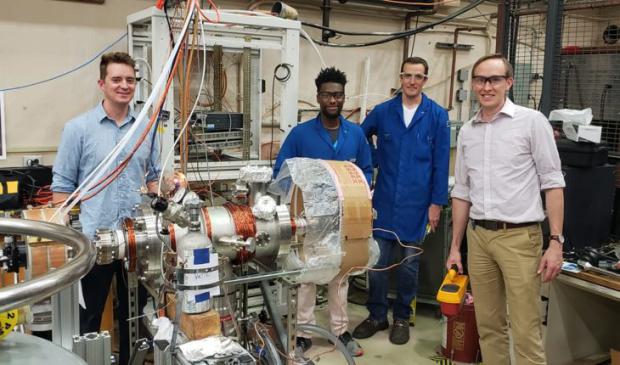
Breaking News
6.5x55 Swedish vs. 6.5 Creedmoor: The New 6.5mm Hotness
Best 7mm PRC Ammo: Hunting and Long-Distance Target Shooting
 Christmas Truce of 1914, World War I - For Sharing, For Peace
Christmas Truce of 1914, World War I - For Sharing, For Peace
Top Tech News
 EngineAI T800: Born to Disrupt! #EngineAI #robotics #newtechnology #newproduct
EngineAI T800: Born to Disrupt! #EngineAI #robotics #newtechnology #newproduct
 This Silicon Anode Breakthrough Could Mark A Turning Point For EV Batteries [Update]
This Silicon Anode Breakthrough Could Mark A Turning Point For EV Batteries [Update]
 Travel gadget promises to dry and iron your clothes – totally hands-free
Travel gadget promises to dry and iron your clothes – totally hands-free
 Perfect Aircrete, Kitchen Ingredients.
Perfect Aircrete, Kitchen Ingredients.
 Futuristic pixel-raising display lets you feel what's onscreen
Futuristic pixel-raising display lets you feel what's onscreen
 Cutting-Edge Facility Generates Pure Water and Hydrogen Fuel from Seawater for Mere Pennies
Cutting-Edge Facility Generates Pure Water and Hydrogen Fuel from Seawater for Mere Pennies
 This tiny dev board is packed with features for ambitious makers
This tiny dev board is packed with features for ambitious makers
 Scientists Discover Gel to Regrow Tooth Enamel
Scientists Discover Gel to Regrow Tooth Enamel
 Vitamin C and Dandelion Root Killing Cancer Cells -- as Former CDC Director Calls for COVID-19...
Vitamin C and Dandelion Root Killing Cancer Cells -- as Former CDC Director Calls for COVID-19...
 Galactic Brain: US firm plans space-based data centers, power grid to challenge China
Galactic Brain: US firm plans space-based data centers, power grid to challenge China
Positron Dynamics Installed Antimatter Propulsion Related Gear

Positron Dynamics designs avoid huge show-stopper problems with using antimatter.
We cannot store useful amounts of antimatter.
We can only generate tiny amounts of antimatter.
Antimatter particles that are created need to be slowed down for use.
It would be very difficult to develop the designs for antimatter propulsion into actual working systems.
Positron Dynamics will use Krypton isotopes to generate positrons. They would breed more Krypton isotopes. They sidestep the issue of antimatter storage. The designs that they have seem to have more manageable problems and they are able to get to actual lab experiments.
It would take 10 school buses of volume at the Brillouin limit to trap 1 microgram.
They are slowing the positrons that are generated.
Krypton 79 isotope to generate hot positrons.
Use their system to moderate the positrons so they can be used.
They then use the Positrons to catalyze nuclear fusion. Neutrons from nuclear fusion can then breed more Krypton 79.
They have done momentum transfer and deuterium loading experiments.
There would be 1-10% momentum transfer from catalyzed fusion propulsion.
They need one trillion positrons to generate nuclear fusion events according to the Lawson Criteria.
Energy balance and 2-D pic models indicate maybe 100 billion positrons would be needed.

 The State's Last Stand
The State's Last Stand


